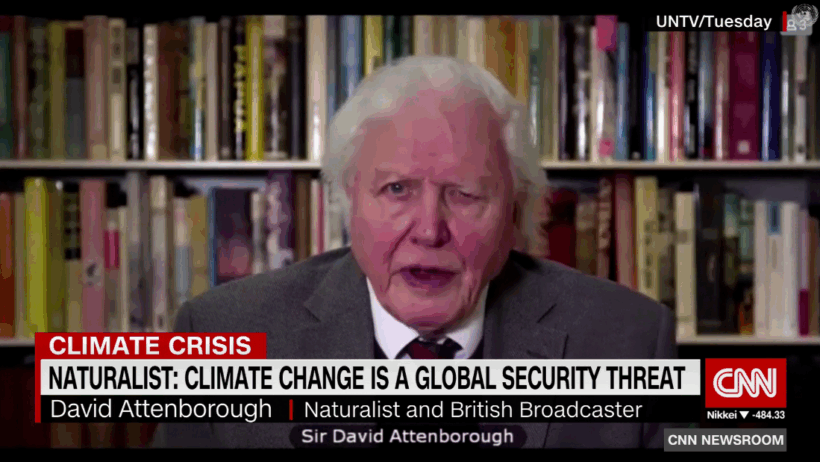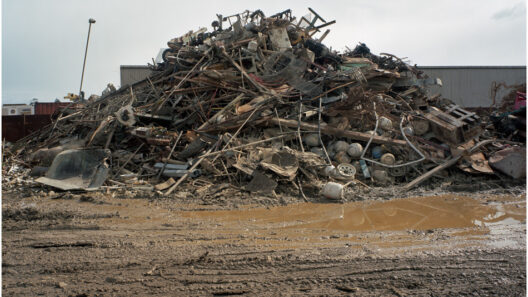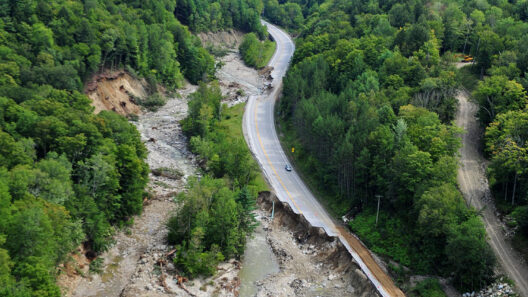As we delve into the murky waters of national security threats, one might ask: what if the greatest challenge we face in safeguarding our future isn’t a rogue state or a terrorist organization, but rather something as insidious as global warming? This contemplation raises a crucial inquiry—how does climate change transform from a mere environmental issue into a formidable national security concern?
To comprehend this paradigm shift, we must first explore the mechanics of climate change. Global warming, chiefly driven by anthropogenic activities, leads to the gradual increase in Earth’s average surface temperature. This phenomenon arises from the escalating concentrations of greenhouse gases such as carbon dioxide and methane in the atmosphere, primarily due to fossil fuel combustion and deforestation. As temperatures rise, we witness an array of catastrophic repercussions, from increasingly severe weather events to rising sea levels, each posing unique threats to national stability.
The impacts of climate change are not merely theoretical; they are palpable and pervasive. For instance, consider the escalating frequency and intensity of extreme weather events. Hurricanes, floods, droughts, and wildfires have become more pronounced due to climatic shifts. These disasters result in loss of life, displacement of populations, and strain on resources. When communities are fractured and livelihoods disrupted, the potential for civil unrest and, consequently, national instability increases significantly. This raises the question: how can governments effectively prepare for a future where natural disasters are the norm rather than the exception?
Moreover, the phenomenon of climate-induced migration presents another layer of complexity. As certain areas become uninhabitable due to rising sea levels or persistent drought, populations may be forced to relocate. According to projections, millions could be displaced within the next few decades, leading to a surging wave of climate refugees. This influx poses a considerable challenge to national security. How would countries manage the influx of individuals from regions that can no longer sustain their inhabitants? The potential for conflict over resources is palpable as nations grapple with accommodating new populations while managing their existing citizens’ needs.
Furthermore, the competition for dwindling resources exacerbates tensions both within and between nations. Water scarcity is anticipated to become a critical issue as climate change alters precipitation patterns and accelerates evaporation rates. Regions that depend on glacial meltwater for their water supply may find themselves in dire straits as glaciers retreat. Such resource shortages can lead to conflicts, not only between nations, but also among communities and localities vying for limited supplies. This creates a precarious balance that could tip into violence or further destabilization.
On another dimension, the economic ramifications of climate change pose daunting challenges for national security. The strain on agricultural production, due to altered growing seasons and increased pestilence, threatens food security. As crops fail and food prices soar, societal tensions may rise, leading to unrest. Nations with weak economies are particularly susceptible, as the interplay between economic hardship and political instability magnifies risks. Thus, the question arises: are nations prepared to adapt economically to the changing landscape brought about by climate change?
From a geopolitical perspective, climate change can redefine international relations, as nations’ vulnerabilities vary vastly. For instance, low-lying island nations at risk of submersion face existential threats, while polar regions become focal points for new geopolitical struggles over resources like oil and gas. The Arctic, often described as the “new frontier,” is becoming increasingly accessible due to melting ice, leading to heightened tensions among nations scrambling for territorial claims. How will this alter the balance of power on the global stage as nations jockey for position in the face of changing climates?
Traditional military frameworks may struggle to adapt to these non-traditional threats. The military itself must recalibrate its focus. Instead of merely preparing for conventional warfare, defense strategies must now incorporate climate resilience and disaster response capabilities. This reorientation requires a robust investment in technology and training that align with environmental realities. How can military organizations evolve to address the multifaceted threats posed by climate change, ensuring security while also fostering sustainability?
Furthermore, the role of international cooperation cannot be overstated. Climate change transcends borders, demanding a collective response. Collaborative efforts, such as the Paris Agreement, illustrate the necessity of multilateral approaches in combating climate threats. Nations must unite in their endeavors, sharing resources, knowledge, and technology to tackle these intertwined challenges. But how do we galvanize political will when nationalistic tendencies often prioritize domestic over global concerns?
As we consider the myriad ways global warming shapes our security landscape, it becomes evident that the solutions require a multifaceted and proactive approach. Governments must engage in forward-thinking policies that proactively address the risks associated with climate change. Investing in renewable energy sources, enhancing infrastructure resilience, and developing adaptive strategies will be crucial in navigating the tumultuous waters ahead. The challenge lies not only in recognizing global warming as a security issue but also in fostering the political and social will to confront it head-on.
In conclusion, the intersection of climate change and national security is a complex tapestry woven with strands of ecological stability, resource management, and international diplomacy. As societal structures face upheaval and geopolitics shift under the weight of environmental changes, the call to action is clear. A robust and unified effort is essential to mitigate the impending threats and secure a sustainable future for generations to come. The question remains not if we will face these challenges, but how effectively we will respond to safeguard our shared future on this planet.







